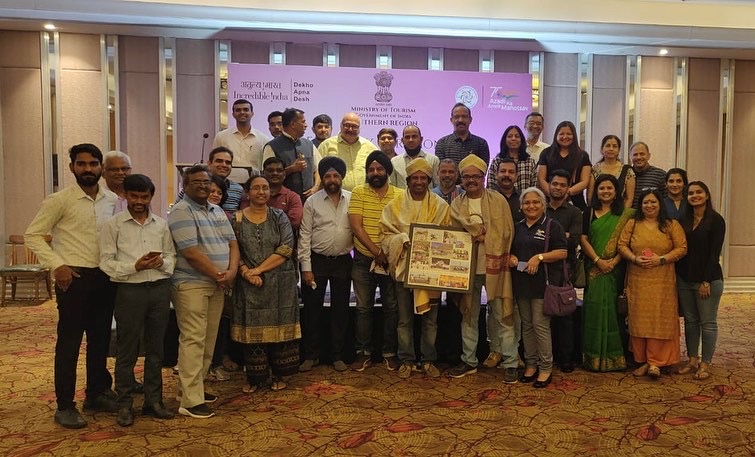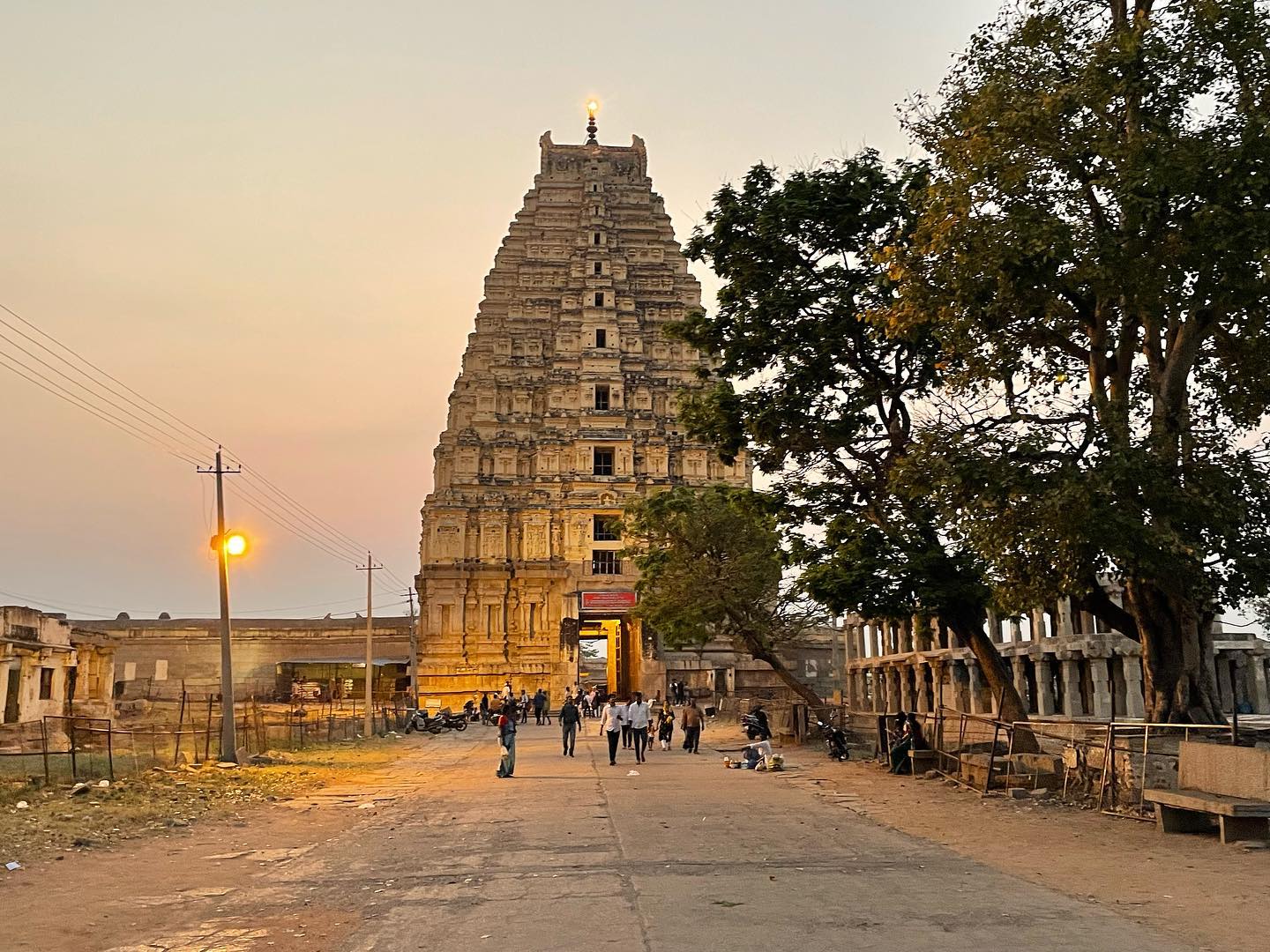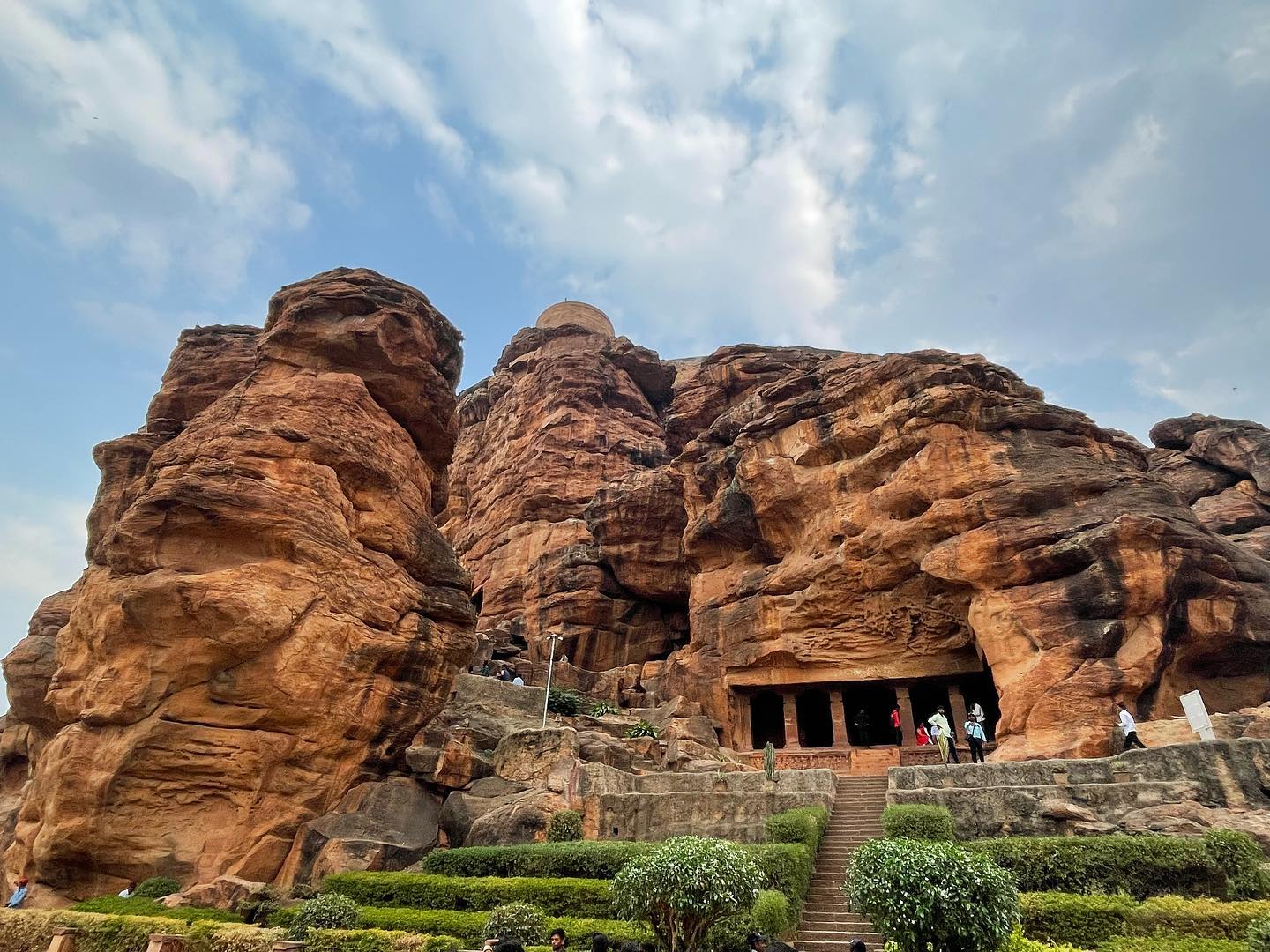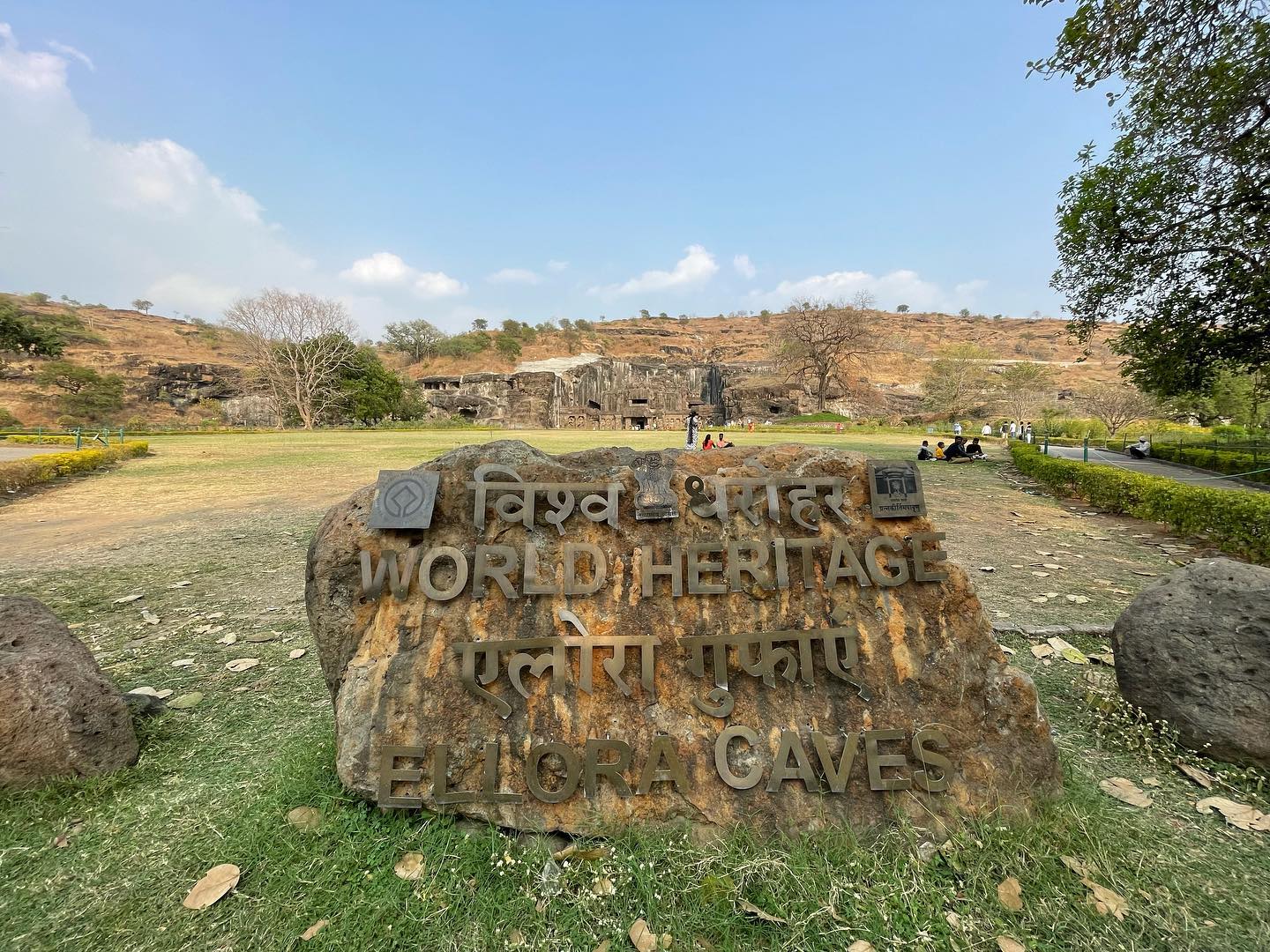14th November, 2021 – 15th November, 2021
History:
Amritsar historically also known as Ramdaspur and colloquially as Ambarsar, is the second largest city in the Indian state of Punjab, after Ludhiana. It is a major cultural and economic centre located in the Majha region of Punjab. The city is the administrative headquarters of the Amritsar district.
Amritsar has been chosen as one of the heritage cities for HRIDAY scheme of the Government of India. Amritsar is home to Harmandir Sahib, popularly known as “the Golden Temple,” one of Sikhism’s most spiritually significant and most-visited gurudwaras. The city is also known for its wooden chessboards and chess pieces manufacturing industry.
The Bhagwan Valmiki Tirath Sthal situated at Amritsar is believed to be the Ashram site of Maharishi Valmiki, the writer of Ramayana. As per the Ramayana, Sita gave birth to Lava and Kusha, sons of lord Rama at Ramtirth ashram. Large number of people visit Ramtirth Temple at annual fair. Nearby cities to Amritsar, Lahore and Kasur were said to be founded by Lava and Kusha, respectively. During Ashvamedha Yagna by Lord Rama, Lava and Kush caught the ritual horse and tied Lord Hanuman to a tree near to today’s Durgiana Temple.
Guru Ram Das, the fourth Sikh guru is credited with founding the holy city of Amritsar in the Sikh tradition. Two versions of stories exist regarding the land where Ram Das settled. In one based on a Gazetteer record, the land was purchased with Sikh donations, for 700 rupees from the owners of the village of Tung.
According to the historical Sikh records, the site was chosen by Guru Amar Das and called Guru Da Chakk, after he had asked Ram Das to find land to start a new town with a man-made pool as its central point. After his coronation in 1574, and the hostile opposition he faced from the sons of Amar Das, Ram Das founded the town named after him as “Ramdaspur”. He started by completing the pool, and building his new official Guru centre and home next to it. He invited merchants and artisans from other parts of India to settle into the new town with him. The town expanded during the time of Arjan financed by donations and constructed by voluntary work. The town grew to become the city of Amritsar, and the pool area grew into a temple complex after his son built the gurdwara Harmandir Sahib, and installed the scripture of Sikhism inside the new temple in 1604.
The construction activity between 1574 and 1604 is described in Mahima Prakash Vartak, a semi-historical Sikh hagiography text likely composed in 1741, and the earliest known document dealing with the lives of all the ten Gurus. In 1766, Ahmad Shah of the DurraniEmpire invaded the Sikh Confederacy, besieged Amritsar, massacred the populace and destroyed the city.
During Sikh Empire in 1822 Maharaja Ranjit Singh fortified the city starting from a wall at KatraMaha Singh area. Later, Sher Singh continued with the construction of the wall with twelve gates (Lahori Darwaza, Khazana, Hakeema, RangarNangalia, Gilwali, Ramgarhia, Doburji, Ahluwalia, Deori Kalan, RambaghDeori, Shahzada and Lohgarh) in it and a fort named DhoorKot that had fortification 25 yards broad and 7 yards high. The circumference of the walled city was around five miles. When in 1849, British annexed Punjab, Amritsar was a walled city and they build thirteenth gate to it known as Hall Gate.
Amritsar was founded by Sri Guru Ramdass ji, the fourth guru of the Sikhs in about 1574 A.D. Before the city was founded, the area was covered with thick forests and had several lakes. To start the city the Guru invited 52 traders from different sectors belongings to nearby places like Patti and Kasur to settle here. These families started the first 32 shops in the city which still stand in the street called Batisi Hatta (32 shops). The Guru himself shifted to live among them in the city which came to be called Ramdaspur and has been eulogised in the Guru Granth Sahib.
The construction of Amrit Sarovar from which the city gets its present name was also stared by Sri Guru Ramdass. His successor, Sri Guru Arjan Dev, completed the project and located the Harmandir Sahib in its midst. Later, when Guru Arjan Dev completed the writing of Holy Granth sahib, a copy of Guru Granth Sahib was ceremonially installed in Harmandir Sahib. Baba Buddha Sahib was appointed the First Granthi.
After the last Guru Sri Guru Gobind Singh Baba Banda Bahadur a Sikh from Nanded came to the Punjab and inflicted several crushing defeats on the imperial Mughal forces. This led to the rise of Sikh power and the rise of several “jathas or bands” called Misls. 12 Misls of the Sikh confederacy controlled Punjab and from time to time attempted to expand their territory and resources. 4 of these Misl, namely; the AhulwaliaMisl, RamgarhiaMisl, KanhiyaMisl and Bhangi Misl controlled Amritsar from time to time. Each of them contributed to the city of Amritsar.
Before Maharaja Ranjit Singh, outer Amritsar was controlled by the Bhangi misl who built the Gobindgarh Fort. They were crushed by Maharaja Ranjit Singh, early in his career. Part of Amritsar was controlled by The KhanhiyaMisl with whom Maharaja Ranjit Singh formed a matrimonial alliance by marrying Jai Singh infant granddaughter Mahtab Kaur when he was six year old himself.
The Ahluwalia Misl Controlled a large part of the city. Jassa Singh Ahluwalia was its most prominent leader. He defeated the Afgan Ahmad Shah Abdali in the battle of Amritsar in 1765 . He was at one time the richest and the most powerful misaldars. The Misl built a fort in the city and had full control, till Maharaja Ranjit Singh forces to accept his leadership.
The RamgariaMisl controlled the rest of Amritsar and was the most powerful misls. Jassa Singh Ramgarhia was the first to fortify the Amritsar, He surrounded the place with the Huge mud wall calling it Ram Navami or fort of God. It was attacked by the imperial Mughal forces but it was rebuilt by Jassa Singh who renamed the place as Ramgarh from which his misl took its name Ramgarhia. He was the ferocious military leader and even accepted red fort in New Delhi and made away with four guns and the endowment slab on which the Mughals were crowned and placed it within the Golden Temple Complex. During the Misal period Barracks, Bungas, Forts and Havelis were constructed as required around the Golden Temple for use of the Sikh Army.
Maharaja Ranjit Singh brought all the Misls under his control and took over full control of Amritsar by 1802 A.D. It was who fortified the Gobind Garh Fort on the modern lines. He also built the Ram bag Palace and the garden of Mughal Lines and covered the Harmandir Sahib in Gold and made it look as we see it today. Maharaja Ranjit Singh also built a huge wall with 12 gates around the city of Amritsar. Only one gate “The Ram Bagh Gate” stands till day.
The British took over Amritsar in 1840 A.D. The years under the British rule saw the demolition of the outer walls of the city and rebuilding of gates, the construction of Town Hall from where they administered the city of Amritsar. The British also renamed the Ram Bagh Garden as Company Bagh. Current building of the Railway Station, the post office and the Saragarhi Gurdwara Memorial were all erected during the British era.
The best example of Indo-British architecture however, is the Khalsa College, designed by the famous architect Ram Singh, a resident of Cheel Mandi, Amritsar. His works include the Darbar Hall of Queen Victoria at Osborne House, UK the Darbar Hall of Mysore and Kapurthala, Chiefs College at Lahore and several other outstanding examples of Indo-British Architecture. He was the pioneer in taking the exquisite Pinjara Wood work and wooden carvings of Amritsar and making them popular all over the world.
The Heritage Walk show cases some exquisite wood work and traditional architecture. The city is the cultural capital of Punjab today.
Jalianwala Bagh
The Jallianwala Bagh massacre, involving the killings of hundreds of Indian civilians on the orders of a senior British military officer, Reginald Edward Harry Dyer, took place on 13 April 1919 in the heart of Amritsar, the holiest city of the Sikhs, on a day sacred to them as the birth anniversary of the Khalsa (Vaisakhi day).
On 13 April, the traditional festival of Baisakhi, thousands of Sikhs, Muslims and Hindus gathered in the Jallianwala Bagh. An hour after the meeting began as scheduled at 16:30, Dyer arrived with a group of sixty-five Gurkha and twenty-five Baluchi soldiers. Without warning the crowd to disperse, Dyer blocked the main exits and ordered his troops to begin shooting toward the densest sections of the crowd. Firing continued for approximately ten minutes. A British inquiry into the massacre placed the death toll at 379.
Operation Blue Star (1 – 6 June 1984) was an Indian military operation ordered by Indira Gandhi, the Prime Minister of India to curb and remove Sikh militants from the Golden Temple in Amritsar. The operation was carried out by Indian army troops with tanks and armoured vehicles.
Golden Temple
The Golden Temple that you see today interestingly wasn’t covered with an inch of gold when it was first constructed. In the year 1762, this religious heritage site was complete, destroyed by Islamic rulers. It was then that Maharaja Ranjit Singh, a brave Sikh ruler rebuilt the entire temple and added a sparkling outer covering of gold to the marble structure. 500 kg of pure 24-karat of gold worth ₹130 crores, covered the temple in all its glory. And that’s when the Sri Harmandir Sahib got famously referred to as the Golden Temple of Amritsar.
Historical records depict that the Buddha arrived at the sacred site of the Golden Temple. At that time, the landscape comprised of an ancient lake covered by dense woods. Buddha found this place to be an ideal spot for meditation for sadhus and saints. During his quest for the true meaning of life, he also recommended this same site as a divine spot for meditation. With Buddha, meditating at the exact spot where the Golden Temple stands today, it indeed makes this place a divine refuge.
The Golden Temple is surrounded by a sacred pond called the Amrit Sarovar. This literally translates to “Pool of the Nectar of Immortality”. The artificial pond, dug out in 1577 by Guru Ram Das, is known to exuberate spiritual energies. Devotees bathe in the holy water of the Sarovar before offering prayers at the temple. They believe that one can possess spiritual energies by taking a dip in the holy water. Besides, Amrit Sarovar is also believed to have medicinal properties. So it’s always advisable to wash your hands and feet here before walking into the temple.
The Golden Temple is one of the most visited religious sites in the world according to the UK-based World Book of Records. Moreover, while Taj Mahal is one of the 8 wonders of the world, and often laces the bucket lists of foreign tourists, yet it’s not the most visited place in India. While Taj Mahal witnessed 3 million visitors in the whole of 2013. The Golden Temple of Amritsar witnessed 3 million people in just a month. Around 1 lakh people visit the holy gurudwara in just a day and that’s nothing short of fascinating. The Golden Temple also ranked higher than the Taj Mahal on BBC’s list of the places to visit before dying.
The stairs that enter the temple go downwards. This is designed in this way to symbolise the humble way of living.
Largest Langar Seva
- Largest Langar in the world :Two hundred thousand rotis (Indian flat bread), 1.5 tonnes of dal (lentil soup) and free food served to 100,000 people everyday are what makes the free kitchen run at the Golden Temple in the western Indian city of Amritsar stand apart.
- By all measures, the kitchen (called langar in Punjabi ) is one of the largest free kitchens to be run anywhere in the world.
- The concept of langars was initiated centuries ago by Guru Nanak, the founder of Sikh religion.
- On weekends and special occasions double the numbers of people visit the langar. The langar never stops and on an average 7,000 kg of wheat flour, 1,200 kg of rice, 1,300 kg of lentils, 500 kg of ghee (clarified butter) is used in preparing the meal every day,”
- “The free kitchen uses firewood, LPG gas and electronic bread makers for the cooking and we use around 100 LPG cylinders and 5,000 kilograms of firewood every day,” he adds.
- The kitchen is run by 450 staff, helped by hundreds of other volunteers.
Wagah Border
The international border between India and Pakistan. The pomp and pageantry of the Beating Retreat and the Change of Guard within handshaking distance of the Indian and Pakistani forces makes for a most charming spectacle. Wagah, an army outpost on Indo-Pak border – between Amritsar and Lahore, is an elaborate complex of buildings, roads and barriers on both sides. The daily highlight is the evening “Beating the Retreat” ceremony. Soldiers from both countries march in perfect drill, going through the steps of bringing down their respective national flags. As the sun goes down, nationalistic fervour rises and lights are switched on marking the end of the day amidst thunderous applause.
Hussainiwala
Dwelling at the border town of Ferozepur where we have the international India Pakistan Hussainiwala border, the city finds mention in many books of history due to this focal point. Situated on the banks of the river Sutlej, the place has its own remarkable but gruesome history. When the Indian freedom struggle was in the full swing, and the patriots of the motherland were combating against the atrocities of the barbaric Britishers, a trio emerged on the scene. This trio is today reverently known as S. Bhagat Singh, Rajguru and Sukhdev. In their attempts to liberate India from the clutches of the Britishers, they had killed the brutal John P. Saunders. Consequently, the British rulers executed them and thereafter threw their half cremated bodies into the river Sutlej at this point in Hussainiwala. Today a large number people gather every evening here to pay their tributes to these three spunky sons of Mother India at their cenotaph.
A sacrosanct monument has been built here to keep the sacred memory of these three great martyrs alive. So strong are the vibes of the place that the eyes of visitors well up with tears and heads are bowed before with a sense of indebtedness. The well maintained BSF museum here showcases the very pistol of Bhagat Singh with which he had killed Saunders. One can also view many original framed handwritten letters by these three patriots, some while they were lodged in jail.
Most of the visitors park their vehicles here and walk the one kilometre distance to behold the breathtaking Retreat Ceremony at the International India Pakistan boundary line. Each individual and vehicle is thoroughly frisked by the BSF with the help of the well trained sniffer dogs. Reaching the line dividing India and Pakistan, affords one a clear view of the throng of people assembled on the other side — our frenemies!
















